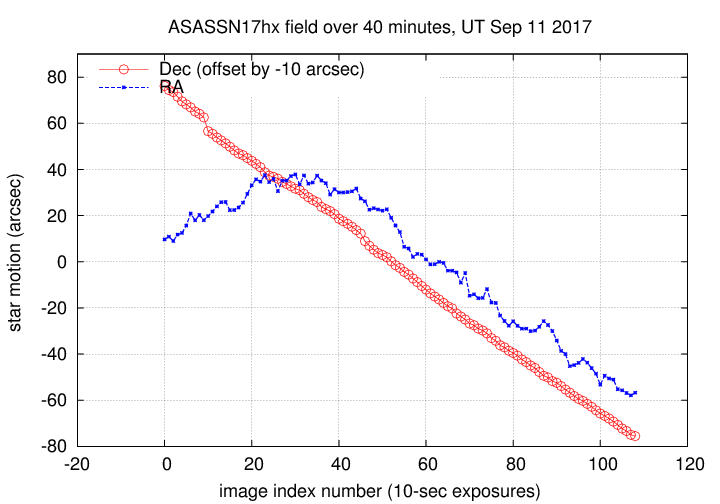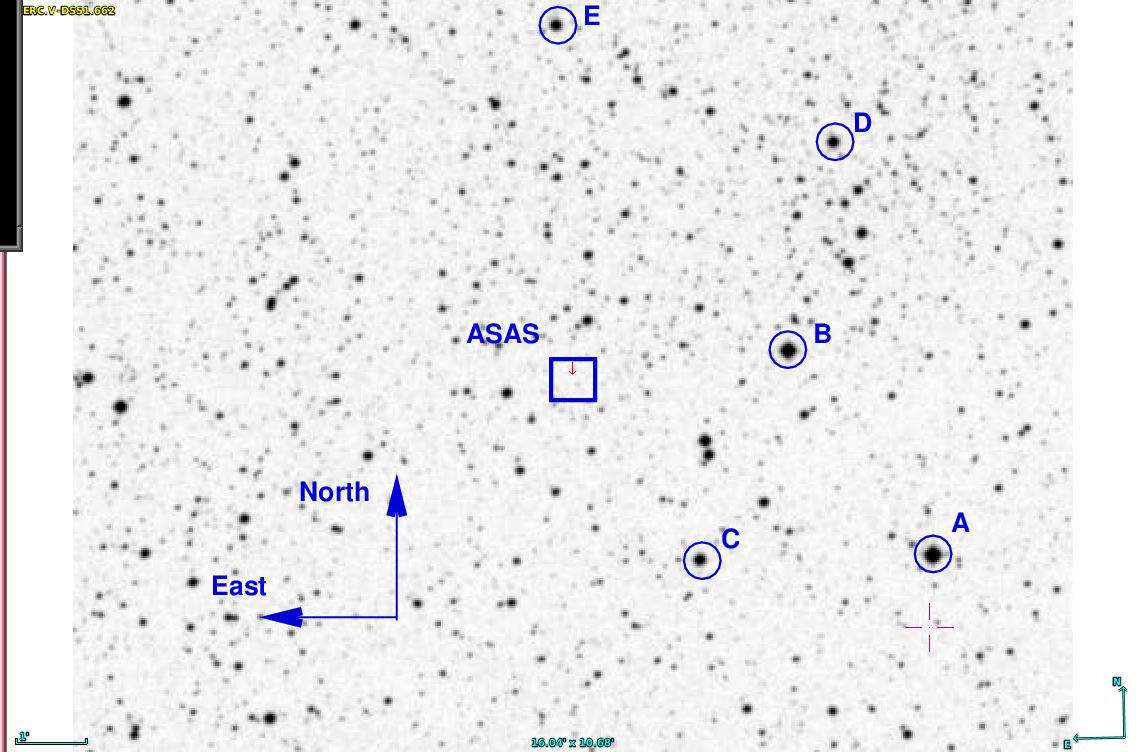
On the night of Sep 10/11, 2017, Jen Connelly, capstone student Victor Rau-Sirois, and SPEX member Drew Walters, and I, used the RIT Observatory telescope and cameras to acquire a small dataset. We chose as a target ASASSN-17hx, also known as Nova Sct 2017. This was more of a training mission than a real scientific run, though.
The main setup was:
Notes from the night
A series of dark images (1 sec, 3 sec, 10 sec, 30 sec) shows the same puzzling change in counts vs. exptime that I noted last year; see
The values tonight, at temperature T = -15 C, were
1 sec 333 counts 3 372 10 369 30 371
We made sure to acquire dark frames with the same exposure time as a our target frames.
We weren't guiding. Over the course of about 40 minutes, as we took a series of short exposures of ASASSN-17hx, the stars drifted quite a bit in both RA and Dec. Note the very steady drift in Dec.

The sense of the drift was that
a) stars moved to larger column numbers = west, so the telescope
was drifting East
b) stars moved to larger row numbers = south, so the telescope
was drifting North
The telescope was pointing to the south-western quadrant of the sky during this period.
Here's a chart of the field of this variable star, which is at
RA = 18:31:45.9 Dec = -14:18:55.6 (J2000)
The chart is about 16x10 arcminutes.

Among the labelled stars is
A UCAC4 379-113757 V = 9.739
Last modified 9/11/2017 by MWR.